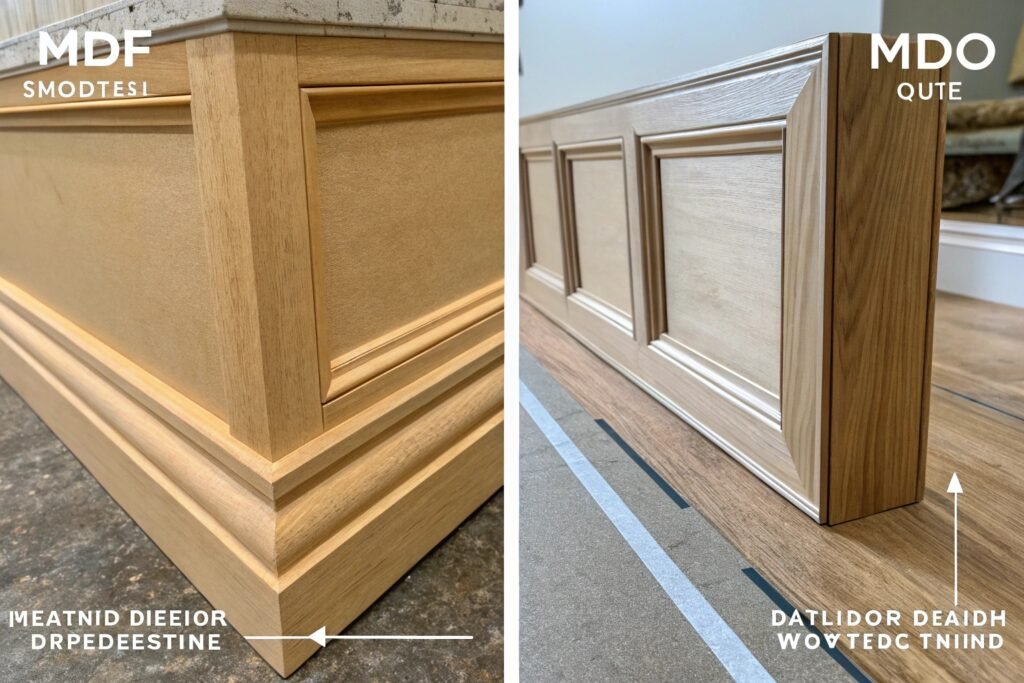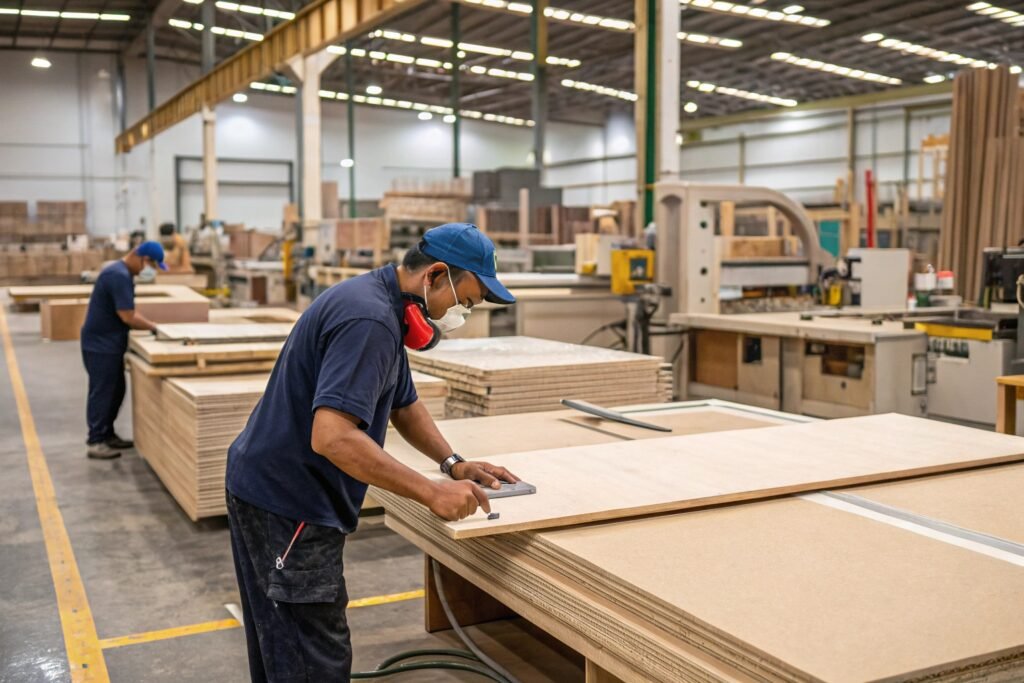MDF is smooth and easy to shape—but it swells with moisture. MDO resists water and wears tougher—but it’s not as fine for detail work.
MDO (Medium Density Overlay) has a weather-resistant surface bonded to plywood, while MDF (Medium Density Fiberboard) is a dense, smooth fiber panel best used indoors.

I’ve seen many projects fail because someone used MDF outdoors, thinking a little paint would protect it. It doesn’t. MDO is built for that kind of job—knowing the difference is essential.
Which is better, MDF or MDO?
“Better” depends on the project. You want clean paint? MDF wins. You want weather protection? Go with MDO.
MDF is better for indoor trim and furniture where smoothness matters; MDO is better outdoors and anywhere moisture could be a problem.

Side-by-Side Comparison
Here’s how they stack up:
| Feature | MDO | MDF |
|---|---|---|
| Core | Plywood | Compressed fiber |
| Surface | Resin-treated overlay | Smooth fiber |
| Moisture Resistance | High | Low |
| Paint Finish | Good | Excellent |
| Workability | Moderate | Very easy |
| Weight | Lighter | Heavier |
| Best Use | Signs, cabinet backs, panels | Molding, interior furniture |
I once built a laundry cabinet with MDF—after two years of steam and drips, the panels expanded. Since then, I’ve used MDO for any cabinet near moisture.
What is MDO plywood good for?
MDO doesn’t look fancy—but it performs under pressure, especially when water and sunlight are in the picture.
MDO is good for painted signs, cabinet backs, outdoor panels, and shop-grade furniture where moisture resistance matters more than a flawless finish.
Why Choose MDO?

Its resin-treated surface keeps it from soaking up paint or water. It’s a favorite in commercial builds and signage.
| Use Case | Why MDO Works |
|---|---|
| Exterior Signage | Paint sticks well, resists rain |
| Cabinet Backs | Holds fasteners, won’t warp |
| Workbenches | Tough surface, easy to replace |
| Painted Wall Panels | No grain bleed, even finish |
In our shop, we once used MDO to build outdoor signage frames. Five years later, they’re still solid—even after monsoons and direct sun.
What is MDO used for?
Though it’s plywood at its core, MDO is built to take abuse—rain, screws, traffic, even some chemicals.
MDO is used in commercial signs, formwork panels, utility cabinets, shop fixtures, and anywhere you want wood strength plus a paint-ready surface.
MDO In Real Projects
Contractors choose MDO when they need structure, but don’t want the grain or warping risks of standard plywood.
| Application | Benefits |
|---|---|
| Concrete Form Panels | Smooth release, tough layers |
| Painted Furniture Bases | Holds shape, easy to seal |
| Garage Storage | Moisture-resistant, rugged |
| Fascia and Trim Boards | Paintable, weatherproof |
MDO has become a go-to for painted exteriors because it’s easier to maintain than raw wood—without switching to full plastic or metal.
Conclusion
When it comes to choosing between MDO and MDF, the decision largely depends on your project’s needs. If you’re working with furniture or interior details where smoothness and fine finishes matter, MDF is the way to go. It’s easy to work with, takes paint well, and delivers a clean, polished result. However, if your project involves outdoor exposure, moisture, or requires durability, MDO should be your go-to choice.
MDO is built to withstand the elements, making it perfect for applications like outdoor signage, cabinets near moisture, and other structural uses that need both strength and weather resistance. While it may not offer the same fine finish as MDF, its toughness and longevity outdoors make it a top choice for a variety of commercial and residential projects.
Ultimately, knowing which material to choose can save time, effort, and money. Be sure to evaluate the environment and function of your project before making a decision—whether you need the fine finish of MDF or the resilience of MDO, both materials have a place in a well-rounded builder’s toolkit.
